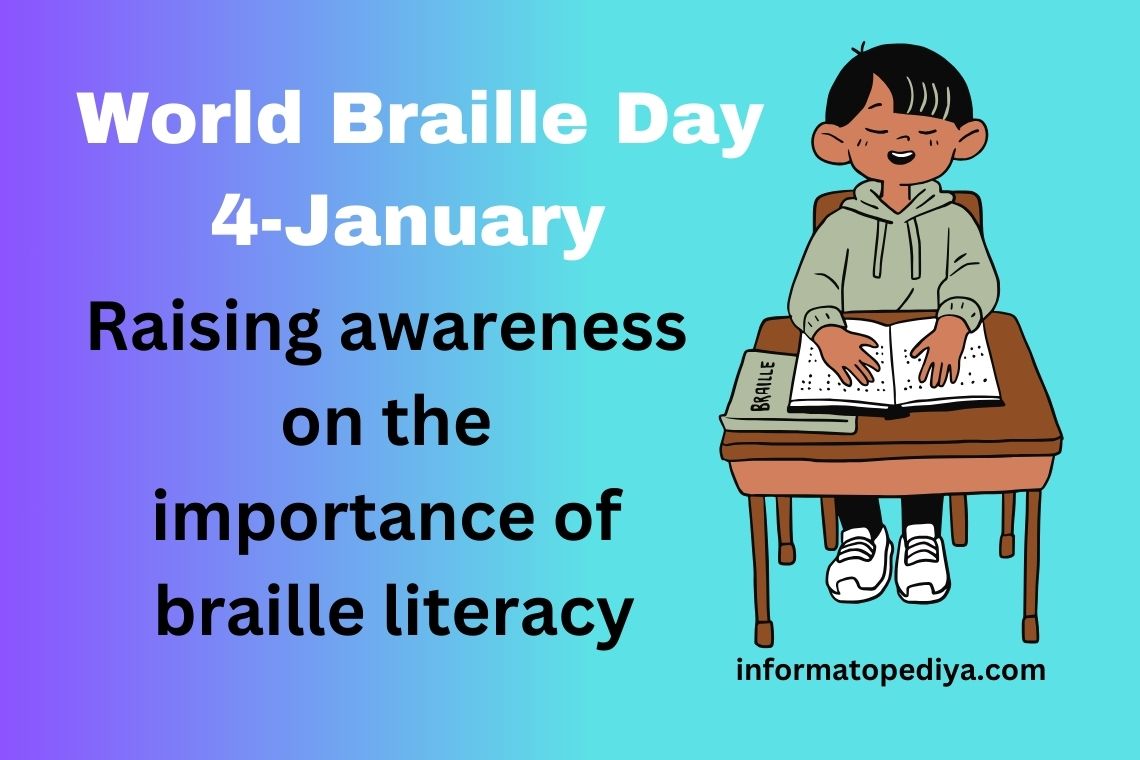
Table of Contents
World Braille Day: A Comprehensive Exploration of Louis Braille’s Legacy
Introduction:
World Braille Day, celebrated annually on January 4th, holds profound importance as it marks the beginning anniversary of Louis Braille, the visionary inventor at the back of the tactile writing gadget that has empowered millions of visually impaired individuals globally. In this distinctive exploration, we can delve into the history, use, guidelines, and worldwide effect of Braille, emphasizing its position in fostering inclusivity and accessibility.
History:
Louis Braille was born on January 4, 1809, in Coupvray, France. At the young age of 3, an unfortunate coincidence left him blind. Despite this adversity, Braille became a decision to overcome the challenges confronted by the visually impaired in getting access to written facts. Inspired by the aid of a navy cryptography gadget and the use of raised dots, Braille developed his tactile writing gadget at a mere 15 years old.
The Braille System:
The Braille machine includes a grid of six dots arranged in columns of three dots each. Each mixture of raised dots represents a letter, quantity, or punctuation mark. This progressive machine unfolded a world of literacy for the blind, supplying them with a means to read, write, and speak independently. The simplicity and effectiveness of Braille have made it a cornerstone of accessibility for the visually impaired.
Guidelines for Braille Usage:
To ensure the effectiveness of Braille conversation, adhering to pointers is vital. Proper spacing between characters, constant formatting, and appropriate punctuation contribute to the clarity and readability of Braille texts. Understanding and enforcing those recommendations enhances the usability of Braille for its intended purpose, making facts more accessible to people with visible impairments.
The Use of Braille in Different Fields:
Braille unearths utility in diverse factors of existence, from schooling to literature and the past. In academic settings, Braille textbooks and learning substances permit blind students to engage with the curriculum independently. In literature, many traditional and modern-day works were transcribed into Braille, making sure that the pleasure of studying isn’t restricted with the aid of visible impairment.
Furthermore, Braille is employed in signage, labeling, and public spaces to offer important statistics to the visually impaired. From elevator buttons to restroom signs and symptoms, the mixing of Braille fosters autonomy and inclusivity in navigating the physical surroundings.
The Global Impact of Braille:
World Braille Day serves as a global platform to raise awareness about the importance of Braille and suggest its extensive integration. Organizations and advocacy groups work tirelessly to promote the inclusion of Braille in academic curricula, public areas, and technological advancements. The birthday party of this day is a testament to the transformative impact of Braille in breaking down limitations and growing a more inclusive society.
Educational Initiatives:
Numerous instructional tasks recognize the importance of promoting Braille literacy. Braille literacy applications have the intention of equipping blind and visually impaired individuals with the abilities to read, write, and talk effectively using Braille. These projects emphasize the importance of early intervention and training in making sure that people with visual impairments have the same possibilities for learning and private development.
Braille Technology:
Advancements in technology have expanded the attainment of Braille beyond conventional tactile books. Refreshable Braille displays, electronic devices that convert virtual textual content into Braille, permit blind people to access information from computer systems and smartphones. These technological improvements bridge the gap between virtual global and Braille literacy, enhancing the integration of the visually impaired into the cutting-edge information age.
Accessibility Legislation:
In many nations, there is a growing recognition of the need for legislative measures to ensure accessibility for the visually impaired. Laws and policies mandate the inclusion of Braille in public spaces, transportation, and academic materials. These prison frameworks contribute to an inclusive society in which information and offerings are accessible to all, no matter their visual capacity.
Article Reference:
For those seeking a deeper know-how of Louis Braille’s existence and the development of the Braille device, references consisting of “The Story of Louis Braille” with the aid of C. Michael Mellor offer treasured insights. Additionally, authoritative resources like the World Blind Union and the National Federation of the Blind offer comprehensive data on Braille advocacy and projects.
Conclusion:
World Braille Day stands as a poignant reminder of the transformative energy of language in breaking down boundaries and fostering inclusivity. Louis Braille’s legacy continues to form the lives of millions, offering a tangible way for the visually impaired to access facts, training, and communication. As we celebrate these days, allow us to reflect on the development made and the work that lies ahead in ensuring that Braille remains a beacon of empowerment for generations to come.






